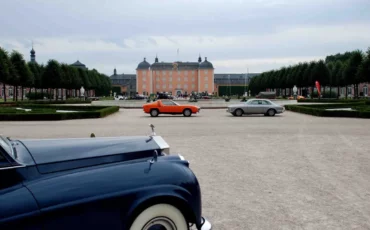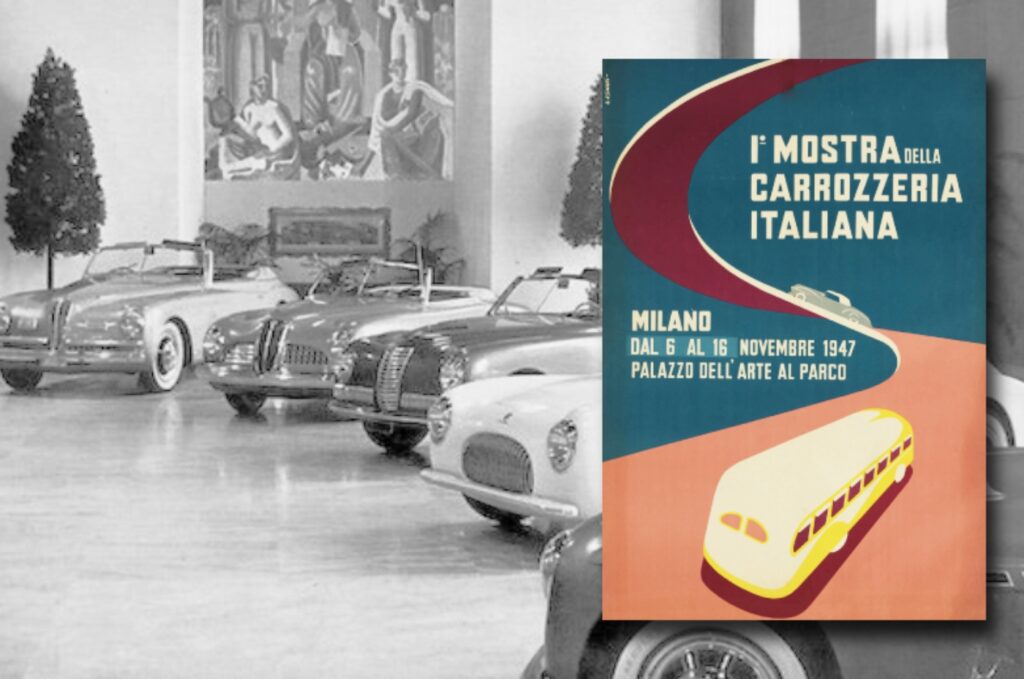
The Desire for Rebirth
Lets step back in time to the year 1947, a momentous period marked by the end of a war that left both material and moral devastation in its wake. The echoes of those challenging years are etched in the memories of those fortunate enough to have lived through them. The Mille Miglia revives, symbolizing the resilient spirit of a society yearning for recovery.
As the pages of history turn, a new chapter unfolds with the birth of Ferrari, a beacon of hope and innovation. Alongside it, the automotive landscape welcomes the introduction of the new Isotta Fraschini and Cemsa Caproni, embodying the determination of car manufacturers to rise from the shadows of wartime struggles.
The war may have ceased, but the automotive industry refuses to slumber. Throughout the war, companies were busy preparing for the postwar era, eagerly anticipating the opportune moment to unveil their latest creations to the public. The Paris and Geneva motor shows have already come and gone, showcasing the progress made beyond the battlefield.
In the heart of Italy, however, the automotive scene seems momentarily still. Milan, recognizing the urgency to reconnect with its audience, takes the initiative to organize the inaugural “Mostra della Carrozzeria Italiana” (Exhibition of Italian Car Bodywork). The city, with a quiet confidence, asserts its perennial position at the forefront of this unique sector that seamlessly marries technical sophistication with the recognized style and refined taste of Italian designers.
This exceptional exhibition is not confined to sleek automobiles alone; it extends its embrace to include coaches and buses, emphasizing the comprehensive scope of Italian craftsmanship. Milan, undeterred by the absence of groundbreaking novelties from the local automotive industry, stands tall as a symbol of unwavering commitment to progress, heralding a new era of innovation and elegance in Italian car design.
The exhibition
For this special occasion, Milan and Turin come together in a collaborative effort, with the dynamic Triennale of Milan partnering with ANFIA, the organization that unites national manufacturers and coachbuilders.

Among the highlights is a striking car by Alberto Rossi – CAR displayed outdoors. The event showcases approximately 100 cars, providing visitors with a captivating overview of the craftsmanship of Milanese and Turin-based coachbuilders. The inauguration is graced by the presence of Hon. Corbellini, the Minister of Transport, and is extensively covered by the magazine L’Auto Italiana. Twin photographs in the publication capture Avv. Bianchi Anderloni, the patron of Touring, and Pinin Farina, presenting their latest creations to the attendees.
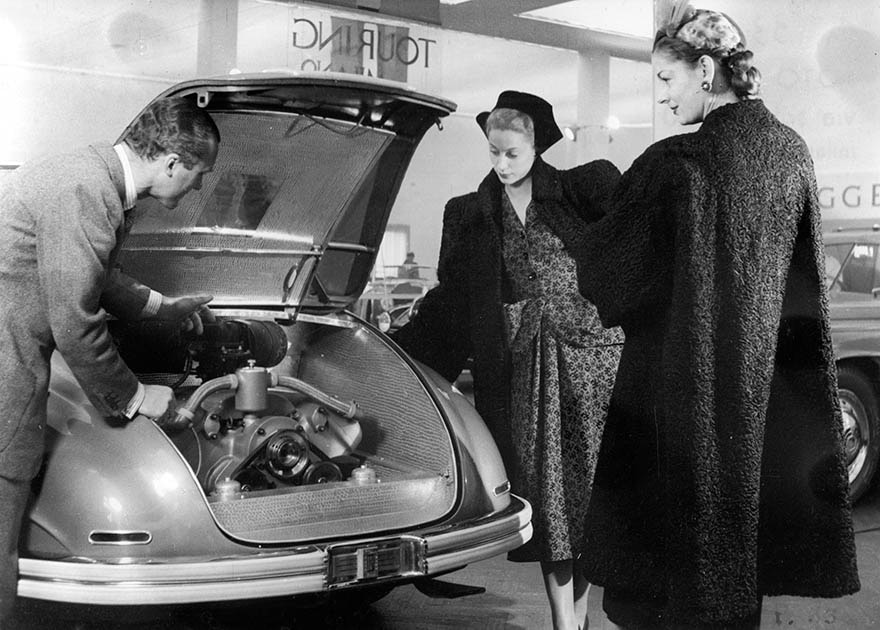
The event proves to be a tremendous success, drawing enthusiastic crowds. Numerous foreign delegations express keen interest in gaining insights into the current state of the Italian industrial landscape. The collaboration between Milan and Turin showcases the rich legacy and innovative spirit of Italian automotive craftsmanship, leaving a lasting impression on all attendees.
The risk of experimenting
The opportunity to own a car may be limited to a select few, but the allure of admiring and even touching luxurious new models captivates everyone’s imagination. People yearn to dream, envisioning themselves cruising in a convertible, the wind tousling their hair. Amidst the array of cars on display, each captivating the attention of a long-awaiting audience, the spotlight shines brightest on the recently unveiled Isotta Fraschini Monterosa, boasting a distinctive rear engine.
Although history reveals that this particular car won’t see continued production, the fervent hope of witnessing the revival of the esteemed Milanese brand, renowned globally, permeates the air. The bodywork, crafted by Milan’s own Touring, stands out for its exquisite aesthetics—light, graceful, and a testament to Federico Formenti’s design prowess as Touring’s chief designer. Other Touring creations, such as the Alfa Romeo 6C 2500 and Lancia Aprilia, further showcase elegance and a commitment to pure design principles.
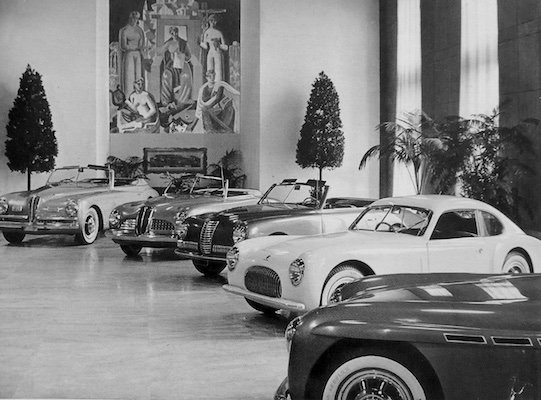
The Pinin Farina booth proudly showcases a true icon, the Cisitalia 202, a design destined for global acclaim as the epitome of style. Its significance is underscored by its official recognition at the Museum of Modern Art (MoMA) in New York.
Meanwhile, Bertone presents an intriguing fish-mouth front end design on the Healey Cabriolet, a design that will reappear on other subsequent chassis.
In the words of Giovanni Canestini, who aptly notes, “What stands out in these exquisite creations within the Exhibition complex is the meticulous craftsmanship evident in every detail, particularly in the interconnected forms. This reflects the use of a highly skilled and exceptionally experienced artistry, which can be described as nothing short of exclusive.”
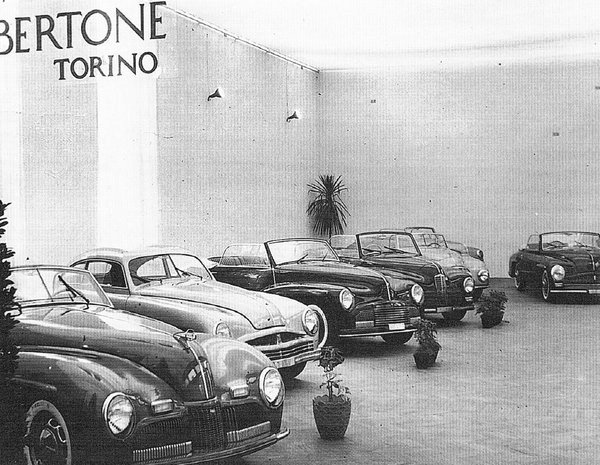
This exhibition should also be celebrated for showcasing a collection of flamboyant-style coachwork that exudes opulence, perhaps as a response to the conspicuous need to counter the deprivations of the war period and its aftermath. Notable examples include extravagant wraparound bodies enveloping all four wheels, such as those crafted by Castagna, Stabilimenti Farina (mounted on Lancia Astura chassis), and Ghia (adorning Fiat 1100s and 1500s with Buick-inspired snouts).
The group also features the artistic contributions of Bonesch. Castagna’s exhibit boasts a pair of Fiat 1100s featuring patented Vistotal windshields and a uniquely arched front end, adding a touch of innovation to the display.
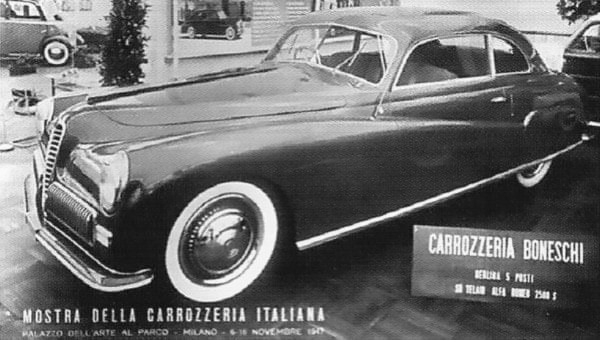
One notable convergence of design aesthetics can be observed in the CAR-bodied Lancia Aprilia, an avant-garde metallic silver convertible showcased outside the exhibition.
It’s intriguing to observe that the trend for covered-wheel bodies with what we’ve labeled as opulent lines, often described as “overflowing” by some enthusiasts, experienced a brief heyday in Italy. In contrast, this style endured in France, garnering significant attention through the creations of renowned names like Figoni & Falaschi, Saoutchk, Chapron, and Labourdette. This enduring popularity in France underscores a distinct inclination towards the extravagant designs of French automotive artists.
The critics
In 1947, Auto Italiana featured a pair of articles by Gianni Allosi, complemented by extensive photographs from Franco Degli Ubertie and Corrado Millanta. The articles shed light on the prevalent exaggerations in the automotive world, criticizing certain coachbuilders for pushing boundaries at the expense of taste. The comments were blunt: “Unfortunately, some signs of decay were evident in this initial display of coachbuilding. Some builders sought to impress with new designs at any cost—a commercial gimmick that failed to convince the discerning Italian public.” The critique emphasized the importance of a balanced stylistic evolution, cautioning against overemphasis that could lead to lapses in good taste.
However, amidst the criticisms, there were bright spots of pure and straightforward style. Auto Moto Avio – Interauto, featuring articles by Giovanni Canestini, added depth to the discourse.
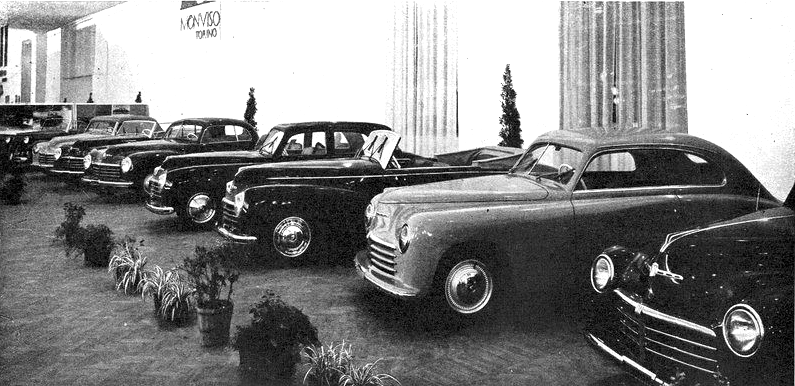
Noteworthy in the realm of technical innovations was the introduction of front-wheel drive as a counterpoint to the Isotta Fraschini Monterosa. The Cemsa Caproni F11, a creation by Prof. Fessia, boasted a boxer engine and garnered significant attention.
This innovative design served as a precursor to the highly successful Lancia Flavia, showcasing the dynamic landscape of automotive developments in 1947.
The 1947 Mostra Carrozzeria Italiana, held at Milan’s Palazzo della Triennale, remains memorable for its impactful showcase of automotive craftsmanship. The event sparked crucial discussions on stylistic evolution, emphasizing the pitfalls of exaggeration while celebrating instances of pure style. Notable technical innovations, such as the Isotta Fraschini Monterosa and the forward-thinking Cemsa Caproni F 11, left a lasting imprint on the industry’s trajectory. As the curtains closed, the exhibition stood as a pivotal moment in the italian post war automotive history, blending style, critique, and groundbreaking technology within the rich tapestry of Italian automotive excellence.
.


